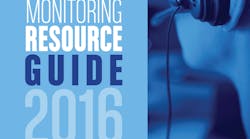The alarm industry is changing, and the Partnership for Priority Verified Alarm Response (PPVAR) is working hard to maximize the value of a monitored alarm system by building strong partnerships with law enforcement and the insurance industry, because verified alarms and priority response translates into more arrests and reduced losses. The concept is a “win” for all stakeholders and gives the consumer real value, ultimately creating a safer community.
After working with law enforcement and completing the “Best Practices” for verified alarms, the PPVAR has been actively working with state and national law enforcement organizations to build the foundations for greater cooperation and increased effectiveness for verified alarm systems. Key projects include: formalized resolutions encouraging verified alarms and priority response; the creation of a professional online training program based on the Best Practices; and promotion of the message to insurance providers.
Resolution Gains Steam
Through its law enforcement members, the PPVAR has been successful in creating a unified definition of the term “verified alarm” to eliminate confusion. A verified alarm happens when a trained central station operator uses technology to determine that an event is a probable crime in progress. The resolution encourages agencies to increase the priority of verified alarms with the goal of making more arrests, which is the ultimate deterrent, along with other potential benefits.
The resolution is working — in fact, in the past few months, several major law enforcement organizations have adopted formal resolutions promoting verified alarms as a means to make more arrests and reduce property losses. These resolutions see verified alarms as a force multiplier to combat crime.
The resolution revolution was started by a PPVAR board member, Chief Chris Vinson of Highland Park, Texas. Chief Vinson encapsulated the ideas behind the PPVAR and drafted the initial resolution, which was formally adopted by the Texas Police Chiefs Association (TPCA) at its annual meeting in Galveston. California Police Chiefs Association (CPCA) President Chief David Bejarano of Chula Vista, Calif., joined the PPVAR board and was instrumental in the California Chiefs unanimously adopting the resolution.
There is also movement at the national level. Sheriff Paul Fitzgerald, past president of the National Sheriffs Association (NSA), proposed the adoption of the same resolution at the NSA annual conference, and a revised version was passed. The FBI Academy, the influential training center for many of the nation’s top law enforcement officers, also passed the resolution. A similar resolution is scheduled to be adopted by the International Association of Chiefs of Police (IACP) in October.
Verified Alarm Training
While the resolutions have been impactful, unquestionably the most important effort happening within PPVAR is the creation of a complete training curriculum for verified alarms based on the PPVAR audio and video best practices, as well as The Central Station Alarm Association (CSAA)’s newly revised CSV-01 verified alarm standard.
The educational modules are designed by PPVAR to provide standardized training for all the stakeholders in the alarm business — the central station operators, the 911 PSAP call takers and the insurance underwriters. The goal is to train central station operators on the PPVAR best practices to assess threat levels and communicate to the PSAP call takers. The training for the 911 call takers is designed to educate them on verified alarms, explain the terms and language being used by the central station operators, and help provide clear and understandable communication that will result in arrests. The educational modules for the insurers are designed to educate the underwriters on the value of verified alarms to reduce property losses and help the industry maximize discounts for alarm systems.
The foundation for the educational process is the central station operator training. The course is composed of seven modules, with both a video and an audio track. Online learning solutions are being developed based on input from subject matter experts on the PPVAR Training Committee, which includes more than 12 members from various companies, both large and small, and provides oversight for the training development process.
The current goal is to have the first module completed before the end of the year. “This is the next important step for PPVAR,” explains PPVAR President Larry Folsom. “The PPVAR Best Practices and the CSAA CVS-01 Verification Standard have solidified the idea of verified alarms. We will now be training operators on these concepts and making both the community and the end-user safer.”
PPVAR Growing
The mission of PPVAR to promote alarm verification and prioritized police response is resonating with the alarm industry, and consequently, membership continues to grow. In the past month, industry giants ADT (with newly merged Protection 1) and Johnson Controls (with newly merged Tyco Integrated Security) have joined the organization, along with founding members such as Stanley, Honeywell and several Sonitrol companies.
These companies are helping with the training development initiatives and are contributing the time and talent of its key leaders to the process. “Creating standards around technologies and services is critical for our industry to work with public safety — particularly with the advent of next-generation 911 systems and advancements in consumer devices,” says Tom Nakatani, ADT Security Services’ IT Director, Signals and Monitoring.
Keith Jentoft is the founder of Videofied (acquired in 2016 by Honeywell Security & Fire) and an active member of PPVAR. The PPVAR is composed of volunteers with a passion to see priority response make a difference for their stakeholders and the consumer/citizen. Access resources and materials that describe both the message and the results at their website, www.ppvar.org.





